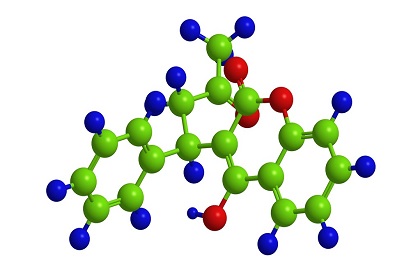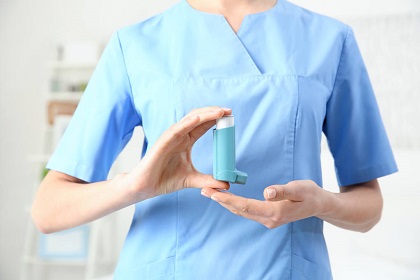Search
What is acute low back pain?
Low back pain is a very common medical problem. It involves pain at the base of the lower back, and it can affect the buttocks and upper thighs, too. ”Acute" low back pain means new pain that has lasted less than one month.
What causes low back pain?
Your chance of having back pain is increased by things like not getting enough exercise, being overweight, having a physically demanding job, cigarette smoking, and simply getting older.
Most back pain occurs at the bottom of the spine because this area holds most of your weight and keeps you standing up straight. The major parts of your back include bones, muscles, nerves, discs (which sit between the bones of your spine, keeping them separated and absorbing shock) and ligaments (which hold the bones together, provide support, and help with movement). Some of the nerves branch out from between the bones. Some go to your back and others go down your legs. This is why back problems can cause leg pain, too.
Most low back pain is "non-specific”, which means that the exact cause can’t be easily identified. While it’s often due to the muscles, ligaments and/or bones, there isn’t a specific problem. Sometimes, the cause can be identified, especially when the back pain spreads into one or both legs, most commonly due to (1) sciatica due to a disc problem, which is more common in people younger than 50, or (2) spinal stenosis, a type of arthritis more common in people over 60.
1. Sciatica (say it:”sy”at-ih-cah") is a specific type of low back pain that most commonly spreads into one leg. The pain is usually sharp or burning, and it’s felt down the back or side of the leg, typically below the knee, to the foot or ankle. Most people with sciatica also have pain in their back. The most common cause of sciatica is a bulging or herniated (”burst”) disc that pinches a nerve along the spinal column. However, many people with no symptoms at all also have a bulging disc, so a disc bulge doesn't necessarily cause symptoms.
2. Spinal stenosis is a specific type of low back pain usually caused by arthritic changes in the back in older patients. Bony deposits called “spurs “grow along the bones of the back. Sometimes they close in on the spinal canal, the space where nerve roots branch off from the spinal cord. This makes the space more narrow, a condition called spinal stenosis. This can also put pressure on the nerves, causing pain. The pain from spinal stenosis can occur in the lower back or buttocks alone, or it can go into the groin or one or both legs. The legs may feel numb, tingling, or heavy. Walking worsens the pain. It can make you feel clumsy and afraid of falling. Unlike most other types of back pain, sitting down usually relieves the pain and lying down can make the pain worse.
How will my clinician figure out what’s causing my pain?
Your clinician will listen to you describe your symptoms, do a physical exam, and ask you questions. These questions may include:
• Have you had back problems before?
• What makes the pain better or worse?
• Exactly where do you feel the pain?
• Do you have numbness or weakness that makes it hard to move around?
• What you were doing around the time your pain started? (Don’t worry if you can’t remember what you were doing. Most back pain isn’t caused by a specific event or injury.)
In most cases, this will give your clinician enough information to identify common issues and rule out rare but serious issues. It will also help your clinician to decide the first steps of treating your pain.
Will x-rays or other tests be helpful?
X-rays, MRIs, and other imaging tests don’t usually show anything that would change the first steps of treating your pain. This is partly because the muscle and ligament strains that cause most pain can't be seen on x-rays. Getting imaging tests doesn't help people with acute low back pain feel better any faster. Your clinician may have you get imaging or blood tests if he or she is concerned about serious issues.
What is the treatment for acute low back pain?
Acute low back pain usually starts getting better on its own over a few days or weeks. The goals of treatment are to control pain and to avoid things that make it worse or prevent it from getting better. Although back pain may be making you feel miserable right now, it’s important to know that there are simple things you can do to manage your pain and help speed up your body’s own healing process:
• Don’t spend too much time in bed. When your pain is really bad, lying down for brief periods on a firm surface can help ease the pain. The best way is to lie on your back with a small pillow under your knees to raise them slightly. You can also lie on your side with your knees slightly bent.
• Avoid sleeping on your stomach. This position can strain your lower back.
• (For spinal stenosis) Try sitting. If you have spinal stenosis, you may find that sitting helps to ease your pain more than lying down.
• Keep doing your usual activities -with sensible modifications. As the pain eases up, you should resume your usual activities, with several important reminders:
▪ Walk! It’s the best and safest activity.
▪ Gradually return to more strenuous activity such as lifting, climbing or jogging over a few days. Increase your level of activity as your pain lets up.
▪ Pay attention to what makes your pain a lot worse -and don’t do it!
▪ Avoid sitting or standing still for long periods of time.
▪ Make sure your seats at home, in your car, and at work provide good support for your back.
▪ Get up regularly (every 20 to 30 minutes) and walk around to loosen up your back.
• Take medicines to control the pain. Over-the-counter anti-inflammatory painkillers such as ibuprofen (Advil, Motrin), naproxen (Aleve), and aspirin are usually enough to ease acute low back pain and make it bearable.
• Visit a physical therapist or chiropractor if the pain isn't getting better. If your pain doesn't go away after about 2 weeks, or if it gets worse, your clinician may refer you to a physical therapist for treatments and exercises. Seeing a chiropractor can also be helpful. If you’ve had long periods of pain before, it may help to go for physical treatments sooner rather than later.
What should I do if the pain doesn't go away? What if l have new symptoms?
Call your clinician if your back pain gets worse despite treatments or you have new pain, numbness or weakness in your legs, changes in your bladder or bowel function, a fever, or other new symptoms.
Otherwise, contact your clinician if your pain does not get better after 2 to 3 weeks. Your clinician may want to see you again or may decide to refer you to a physical therapist or other specialist.
How can I keep the pain from coming back?
Once the acute pain is almost gone, you may want to change your focus to preventing future pain. Here are the most important things you can do:
• Increase your fitness level. Focus on activities that improve endurance, flexibility, and back strength. Activities that are good for your back include walking, stationary bicycling, and swimming or walking in a pool that is at least 4-5 feet deep. Almost any activity is better than just sitting around! Your goal is to exercise 3 or 4 times a week (but even 1 or 2 times can make a big difference).
Wear shoes that provide good support and comfort. If you are already used to exercising, you may want to work out for longer periods or more often. Whatever you can do will help. The key is to choose something you enjoy and to fit it into your routine so you'll stick with it!
• Do some exercises specifically for the back Exercises that strengthen stomach muscles or increase flexibility can help. Your clinician can give you a list of simple stretches and exercises to do regularly.
Having back pain once means that you are more likely to have it again later. You may not be able to eliminate future back pain altogether, especially if your pain is due to arthritic problems such as spinal stenosis, but there is a lot you can do to make yourself more resilient, decrease your pain and improve your well-being.
This document is not a substitute for your care team's medical advice and should not be relied upon for treatment for specific medical conditions.
2017 The General Hospital Corporation.
Primary Care Office lnSite
Developed by the MGH Laboratory of Computer Science and Division of General Internal Medicine
Click the link for more information on Emergency Medicine Clinical Service
Click the link for more information on Rehabilitation Clinical Service
Click the link for more information on Orthopaedics and Sports Medicine Clinical Service











